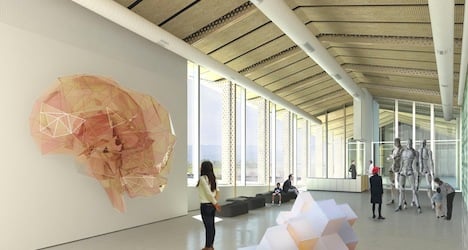The Under One Roof building, designed by Japanese architect Kengo Kuma, is a narrow 275-metre-long structure with a traditional roof that is scheduled to be completed by autumn of 2016.
One part of the building will be dedicated to showcasing EPFL research projects, the institute announced.
Another part is earmarked as a laboratory to experiment with museum exhibition designs connected to digital humanities research projects at the school.
The planned Montreux Jazz Café at EPFL will occupy the southern part of the building, overlooking Lake Geneva.
In addition to being a place for visitors to relax, the café will also highlight the more than 5,000 hours of recordings from past editions of the annual Swiss jazz festival that were digitized by EPFL scientists.
“It will be the place where the digital humanities will show what they are doing,” EPFL President Patrick Aebischer told a televised press conference.
The building is being financed through an 18-million-franc federal government grant with the rest coming from sponsors.
Rolex, the Geneva-based luxury watch firm, the Fondation Gandur pour l’Art and a group of partners backing the Montreux Jazz Digital Project are together contributing 21 million francs.



 Please whitelist us to continue reading.
Please whitelist us to continue reading.
Member comments